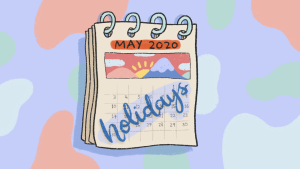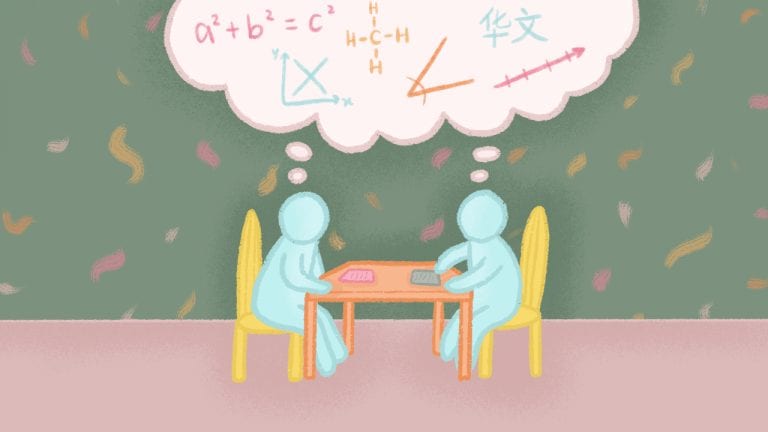
Utilizing Flashcards in Studying

There are many ways with which one can study. And one of these methods is by using a flashcard to help aid an individual study. Flashcards are pages that can contain information that a student wants to input into them. They are a staple tool when studying and one of the most effective ways to review when preparing for an exam.
However, regardless of statistical results, a flashcard’s effectiveness is limited to the ability of its creator to place information in them properly. This is why a lot of students fail to see the effectiveness of flashcards as a tool to study. This article will tackle how one can improve the flashcards they make and also includes a few tips on how to study using flashcards.
What subjects are great with flashcards?
Before we move forward, let us first clarify things. There are certain subjects where flashcards are effective to use, while there are also others where flashcards are almost irrelevant. Knowing which subject you want to study and whether flashcards work well in them is the primary step to take when making flashcards.
Flashcards excel the most when they are used to study subjects that include a lot of theory and not that much practical usage. Subjects that make you memorize a lot of names, characters, places, facts, or other information are great subjects to use flashcards. Here are a few examples of subjects where flashcards will serve as a great tool for studying:
- History
- Science
- Literature (memorizing characters and settings)
- Geography
What subjects are not fit for flashcards?
When it comes to subjects where the effectiveness of flashcards are minimal, then those are the subjects that typically require practical application of knowledge. Those that require you to solve for a missing factor, write an essay, make various stitches, or any subject that doesn’t have a lot to memorize are subjects that do not go well with flashcards. Here are a few of these subjects:
- Mathematics (problem-solving)
- Writing
- Philosophy
- Livelihood subjects

How to make your own flashcards
Personalized flashcards are a great way to study and review at the same time as writing down information and breaking down large topics into bite-sized chunks are a great way to improve your understanding of the topic. However, if you are not up for making your own flashcards, then there are some downloadable flashcards readily available on the internet.
Once you have determined whether the subject or topic that you are going to study is fit for the usage of flashcards, then you can proceed to create your own flashcards. Here are some things to consider when making your own flashcards for studying.
1. Segregate the important statements
Most source materials, be it books, online articles, or lectures, have a few key statements that are the center for the entire topic. These statements are the basis for the theories to be taught to students and are the ones that are often asked for during exams.
When one is trying to make flashcards, it is of great importance to first segregate the important statements from the ones that are there simply to fill the gap in between the pages. This will allow you to only include the information that is necessary and relevant for the topic you are trying to study.
The quality of the contents in your flashcards will depend on the statements you have plucked out from the source material. So, make sure to carefully segregate the important statements from the irrelevant ones to make sure that you will not waste brainpower trying to memorize a sentence that will not show up in the exams.
2. Keep information organized
Organization is another thing to keep in mind when making flashcards. In most cases, the flashcards you will make will be kept together with each other and will have a specific order you will keep them at. And making sure that the topics are organized so that they flow smoothly is very important in terms of effectiveness for studying and to avoid confusion while studying.
If you are working with multiple topics, be sure to organize the information you will put into your flashcards accordingly. This will help you avoid confusion by making sure that no random statement that should have belonged to another topic wanders into your current flashcard. It is also advisable to keep flashcards that belong to the same topic grouped together to make sure that all the information you need is readily available whenever you try to study your flashcards.
3. Keep watch of the length
Statements written in flashcards work in a similar way as those in PowerPoint presentations. There is a certain number of words and sentences that provide optimal understanding for the listeners while not seeming too boring. This is also true for making flashcards. Once a flashcard includes too much information on one page, it will get progressively more difficult to memorize and recall. Too much information can cause confusion and difficulty with recalling as the brain can only process so much.
With that being said, a flashcard that provides too little information is pretty much useless as well. The entire purpose of flashcards is to provide a way to study large topics into smaller chunks for easier consumption. But when the chunks get too small to notice, they end up being irrelevant. So, make sure to keep track of the length of the statements you include in your flashcards.
4. Know which kind of flashcard you want
Just like how methods for studying have continuously evolved over the past decades, flashcards have as well. Before the rise of computers, there was only one type of flashcard, but now there are two. And choosing which one to use is also essential for optimal flashcard function.
Physical flashcards are those written with pen and paper or any writing and material and writing medium. These are your standard flashcards that are used for studying. They allow easy maneuvering from one card to another and can be accessed anytime you want.
The other type is known as digital flashcards. These are the ones where you encode information through your computer or phone into a flashcard-making app or site. These are a great alternative if you want to avoid having to carry multiple pieces of paper whenever you want to study and make editing your flashcards easier and neater. Both types of flashcards offer their own individual perks, so choose one that fits your preference for studying to ensure you get the most out of your flashcards.

5. Include visual cues
Let’s all admit it, there will be times when simply reading through text isn’t enough to get us to understand something. Plus, it can get boring sometimes. This is why adding visual cues to your flashcards might be a good idea.
By adding pictures, diagrams, charts, or any other visual cues into your flashcards, you will be able to gain a better idea of how the theories you are studying about will look like once they are put to actual use. This will also help you gain a better idea of the size comparisons of results if you are dealing with data.
Adding visual cues also helps alleviate the boredom one feels when studying, thus making sure that you stay focused on studying for a longer period of time. Adding visual cues is easier done in digital flashcards, but you can still do it in physical flashcards if you really want to. However, it will take more time to get visual cues into a physical flashcard.
Tips on studying with flashcards
After making your own flashcards and following our tips to ensure that they are well made and do the job, the next step to take is to start studying your flashcards. Here are some tips to keep in mind whenever you are studying using flashcards to ensure maximum efficiency:
1. Share your flashcards
Everyone is familiar with the saying “two heads are better than one”. A saying that is meant to encourage individuals to cooperate and work together which will make achieving a task easier. This also holds some truth when studying flashcards.
After you have finished going over your flashcards a few times, you can let a classmate borrow them and ask for their feedback about them. This benefits you in two ways, the first one being the fact you have helped your classmate study, while the second one is that the feedback your classmate gives can be a basis to improve your flashcards even more. Sharing flashcards allow more persons to spot flaws in the information put into the flashcards, they can also suggest ways with which to better organize the information in your flashcards.
2. Mix up your run
The most common method to study using flashcards is to read through them from beginning to end over and over again until you have memorized the contents. And if you followed our tip earlier to organize the information you put according to topics, then this task will be easy to accomplish.
However, questions in test exams aren’t arranged the way you want them to be. So, it would be a great idea to mix up your run when studying using your flashcards. This will allow you to strengthen your memory retention and allow you to not rely on any order of information.
3. Study small but often
Studying using flashcards is a technique that is most useful when done in quick sessions that are repeated multiple times a day. After all, they are, in essence, reviewers.
Studying in quick sessions allows you to absorb all the information better as there are only a few pieces to take in. This increases the chances of you actually recalling this information during exams. And to help strengthen your retention of these information, you should study using flashcards multiple times a day to reinforce your ability to recall the information you have stored.

Carelle
Carelle is a teacher who has been through the ups and downs of the teacher and learner life. She wishes for every learner to gain educational satisfaction that will help embody the people they want to be in the future.
Tell Carelle Below What You Think About Her Post!

About FamilyTutor!
FamilyTutor is an established home tuition agency in Singapore! We match suitable home tutors for our clients not just to improve the students' academic grades, but also to build a strong rapport and meaningful relationship with the students and even the their whole family. FamilyTutor put every student in good hands!
If you need an excellent home tutor, feel free to call/WhatsApp us at +65 8777-2168! Our matching service is free!
Related Posts!
Follow Us On Facebook!
Our Service!
- Home Tuition in Singapore
- Home Tutor in Singapore
- Home Tuition Rates in Singapore
- Preschool Home Tuition
- Primary School Home Tuition
- PSLE Home Tuition
- Secondary School Home Tuition
- ITE Home Tuition
- N Level Home Tuition
- JC Home Tuition
- A Level Home Tuition
- Polytechnic Home Tuition
- University Home Tuition
- A-Math Home Tuition
- Biology Home Tuition
- Chemistry Home Tuition
- Chinese Home Tuition
- Economics Home Tuition
- English Home Tuition
- Geography Home Tuition
- H2 Chemistry Home Tuition
- Higher Chinese Home Tuition
- Hindi Home Tuition
- History Home Tuition
- IB Chemistry Home Tuition
- IP Chemistry Home Tuition
- IP Math Home Tuition
- IP Home Tuition
- JC Chemistry Home Tuition
- Literature Home Tuition
- Malay Home Tuition
- Math Home Tuition
- O Level Chemistry Home Tuition
- O Level Math Home Tuition
- O Level Physics Home Tuition
- Online Home Tuition
- Physics Home Tuition
- POA Home Tuition
- Science Home Tuition
- Tamil Home Tuition
Education Levels
National Exams
Math & Science Subjects
Language Subjects
Japanese Tuition
Korean Tuition
German Tuition
Humanities Subjects
Social Studies
Chinese Literature Tuition
About Us
FamilyTutor is an established and the people’s favourite home tuition agency in Singapore! We match a suitable tutor for you not just to improve the student’s grade, but also to build a good rapport and meaningful relationship with the student and even with the student’s whole family! With FamilyTutor, every Singaporean son & daughter is in good hands.
Contact Us
- 8777 2168
- 8777 2168
- Mon-Sun 9am-10pm (Including PH)
- contactus@familytutor.sg
- 17 Petir Road Singapore 678278



